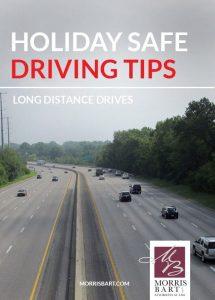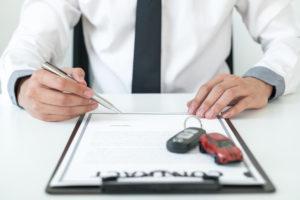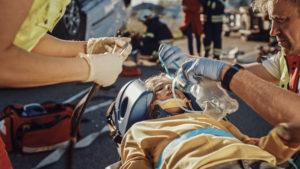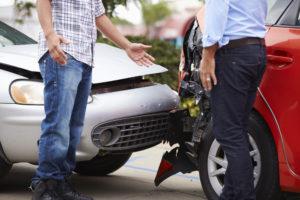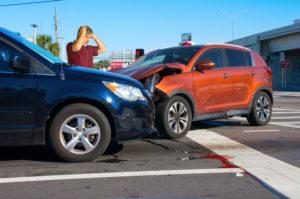
The driver who failed to obey signage, signals, and traffic laws will likely be liable for injuries suffered in an intersection crash. However, determining who is at fault in an intersection collision generally requires an investigation into the circumstances that led to the accident.
To determine which driver caused a crash, the police, insurance companies, and other invested parties will need to understand which driver had the right-of-way and whether one or both motorists acted negligently.
What Causes Intersection Collisions?
The need to have signals and signage to control traffic at intersections predates modern cars. Railroads and bustling cities used gas-powered red lights in the 1860s, and electric signals were installed by 1914.
There is no doubt that intersections without strict traffic rules to govern the right-of-way are dangerous. Because of this, almost all intersection collisions occur when one motorist acts carelessly or recklessly, negligently violating laws and putting others at risk.
Some reasons why collisions may occur in an intersection include when a driver:
- Does not stop at a stop sign
- Goes out of turn at a stop sign
- Runs a red light
- Fails to yield to traffic when turning left on green
- Fails to look for approaching vehicles when turning right on red
For a free legal consultation, call (800) 537-8185
An Investigation Will Prove Fault and Liability
After any traffic accident with injuries or significant property damages, there will likely be one or more investigations into what happened. Law enforcement responding to the crash scene will initially take steps to determine what happened. Their goal is to understand which driver violated traffic laws and the laws they broke.
While the police officers will create an accident report with general information about the accident and any citation issued, the involved insurance companies and/or your personal injury law firm will likely conduct their own investigations into what happened and who caused it.
These investigations generally take longer, require more resources, and compile additional evidence to prove:
- Negligence (fault)
- Liability, including any shared liability
- The types and value of the damages suffered
Evidence Commonly Used to Support an Intersection Collision Claim
While each crash is different and will have its own evidence, some types of evidence are common to many collisions. If you work with an attorney on your case, they will use their experience and resources to identify and gather evidence that could include:
- The crash report that the police filed
- Witness accounts of what happened
- Video or photographs of the collision
- An accident scene survey
- Accident reconstruction
- Expert testimony
- Your relevant medical records
- Receipts, bills, and other documentation of your financial losses
What If I Contributed to Causing the Crash?
In some cases, a victim may contribute to causing an intersection collision. While the other driver ran a red light or caused the accident because of another reckless action, you may be partially responsible in some way.
For example, if you were speeding or distracted when the collision occurred, the insurance companies or court could rule you share in the liability.
Most states still allow you to recover damages if you are partially at fault, although the proportion of your losses you can receive decreases based on the fault you share. Louisiana, Arkansas, and Mississippi all operate on this concept.
For example, imagine you were 20 percent liable for the crash. You had $100,000 in damages. You could only recover $80,000 in this case.
In Alabama, though, shared liability bars you from recovering compensation at all. This is known as “pure contributory negligence.” The Alabama Supreme Court affirmed this case law in 1980 in Golden v. McCurry.
You Will Want an Attorney If the Other Driver Alleges You Share Fault for the Accident
You may want to consider working with our lawyer on your claim if the other driver accuses you of shared liability, if you received a citation, or there are other indications that the claim may not go smoothly.
Contributory negligence can significantly impact your financial recovery. Your lawyer will know how to minimize your role in the crash and fight for your payout from the facts of your intersection collision case.
Cases involving contributory negligence may require going to trial to determine fault and liability. There are deadlines for beginning this process. This includes:
- Two years in Alabama ( Code § 6-2-38)
- Three years in Arkansas ( Code Ann. § 16-56-105)
- One year in Louisiana ( Civ. Code Art. 3492)
- Three years in Mississippi ( Code Ann. § 15-1-49)
Exceptions to these deadlines exist, but they could give you even less time to act. We encourage you to get started as soon as possible to protect your rights.
Click to contact our personal injury lawyers today
Talk to a Lawyer from Morris Bart, LLC, Today for Free
You can speak with the Morris Bart law office closest to you today for free. We provide complimentary initial consultations for accident victims throughout the areas we serve. This includes all of Louisiana, Alabama, Arkansas, and Mississippi.
Call (800) 537-8185 now to discuss your case with our team. We are a contingency fee personal injury law firm.
Questions?Call (800) 537-8185
to find a Morris Bart office near you.


